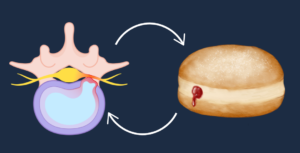Understanding Spine Conditions: Herniated Discs
When it comes to back pain, one of the most common culprits is a herniated disc. But what exactly is a herniated disc, and why does it cause so much discomfort? Let’s break it down in a way that’s easy to visualize—and a bit more fun.
What is a Herniated Disc? 
![]()
Imagine your spinal disc as a jelly donut. Yes, you read that right—a jelly donut! The disc has a soft, gooey center, known as the nucleus pulposus, which is safely encased in a tougher outer shell, called the annulus fibrosus. This structure allows the disc to act as a cushion between the bones in your spine, helping to absorb shock and keep your back flexible.
Now, picture what happens when the outer shell of that jelly donut gets a tear. Some of that delicious jelly (in this case, the nucleus pulposus) starts to ooze out. But unlike the treat, this isn’t so sweet—the jelly can press against nearby nerves, leading to pain, discomfort, and other unpleasant symptoms. That’s what we call a herniated disc.
What to Watch for:
A herniated disc can cause a variety of symptoms, depending on where it’s located and which nerves are affected. Here are some common signs to keep an eye on:
- Lower Back Pain: This is the most common symptom, and it can sometimes spread down to your legs. The pain might be sharp or dull, and it often gets worse with certain movements.
- Sciatica: If you experience pain that travels from your lower back, through your buttock, and down the back of your leg, you might be dealing with sciatica—a telltale sign of a herniated disc pressing on the sciatic nerve.
- Numbness or Tingling: You might feel a pins-and-needles sensation in your arms or legs. This occurs because the herniated disc is irritating the nerves that serve these areas.
- Weakness: Muscles close to the affected disc might feel weak or fatigued. This could make it harder to lift objects, stand up, or even walk.
What Should You Do Next?
If you’re experiencing any of these symptoms or if your back just doesn’t feel right, it’s important not to ignore it. A herniated disc can worsen over time, leading to more severe pain and potentially long-term issues.
The good news? You don’t have to go through this alone. We’re here to help you understand what’s happening with your spine and explore the best treatment options for your specific situation. Whether it’s physical therapy, pain management, or other interventions, our team is dedicated to getting you back to feeling your best.

